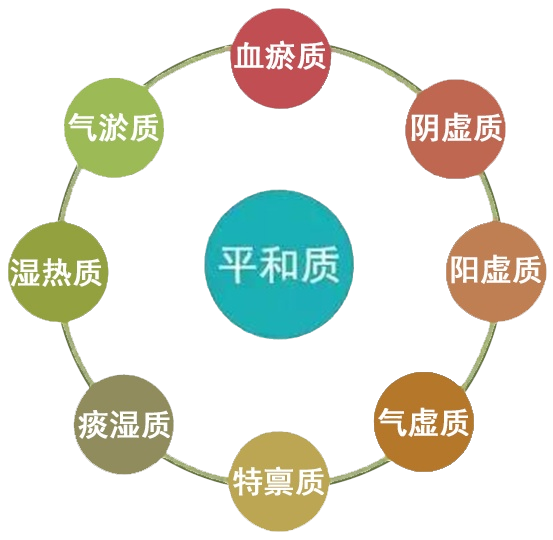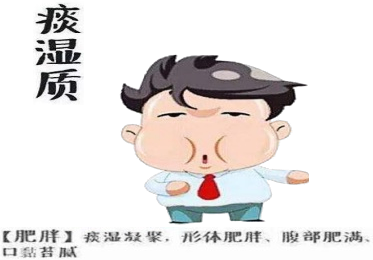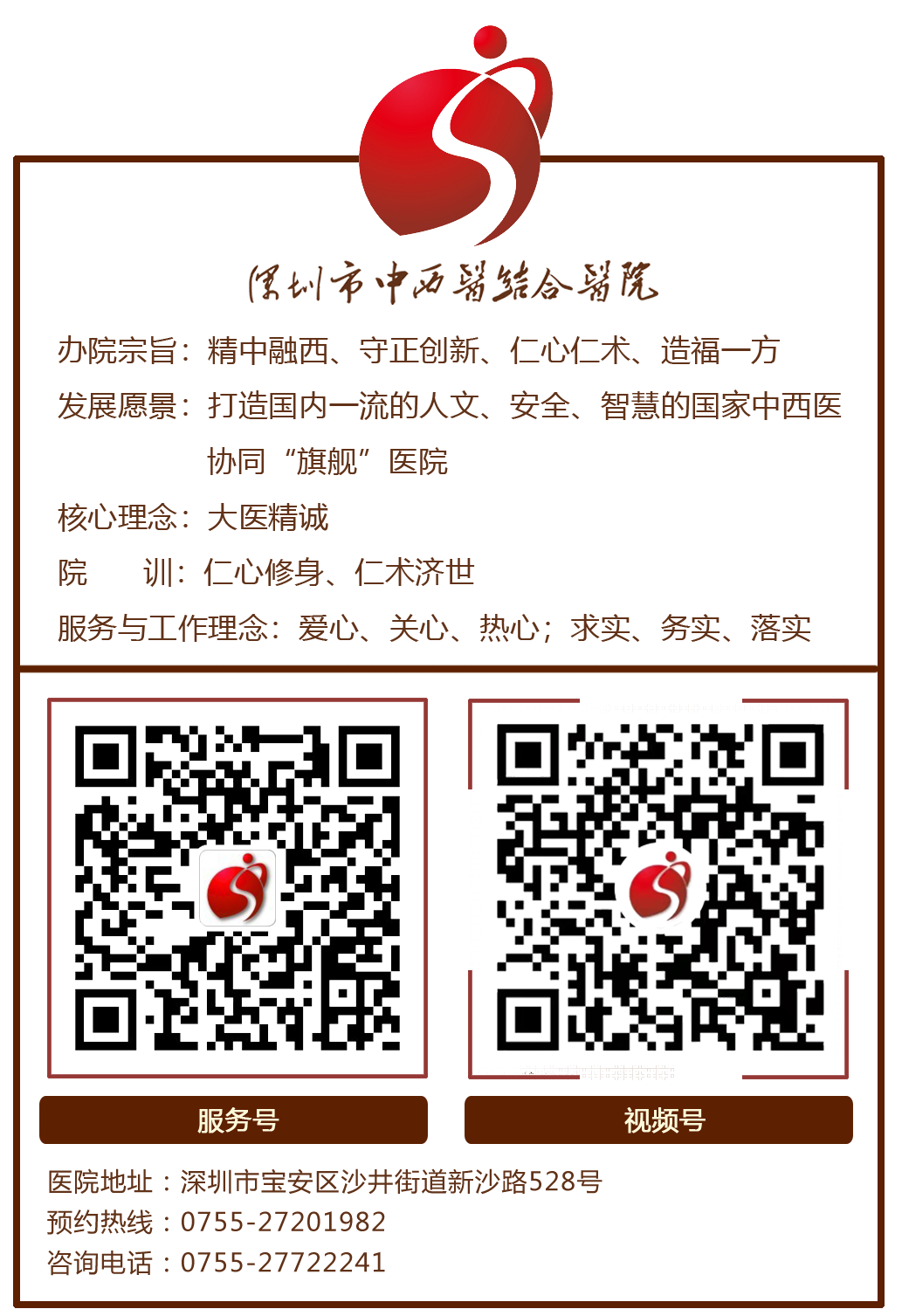In the vast population, there are 9 types of constitutions: 1 balanced and 8 imbalanced.Health maintenance should be tailored to one’s constitution; otherwise, it may backfire and increase the burden on the body.

▲ Nine Constitutions in Traditional Chinese Medicine
In the previous issue, we learned about the identification and regulation of Yang Deficiency Constitution and Qi Deficiency Constitution (⇦ Click here for details).
In this issue, let us continue to learn from Dr. Xu Wenhua, an expert at the Preventive Health Center, about how to identify and regulate the Phlegm-Damp Constitution.
 How to Identify Phlegm-Damp Constitution
How to Identify Phlegm-Damp Constitution
The main characteristics are being overweight and fatigue.
If you are overweight and experience the following issues, you may have a Phlegm-Damp Constitution:
1. Feeling of chest tightness or abdominal fullness.
2. Easily fatigued, feeling heavy and uncomfortable.
3. Soft and bloated abdomen.
4. Excessive oil secretion on the face.
5. Swollen upper eyelids (slight bulging of the upper eyelids).
6. A sticky feeling in the mouth.
7. Frequent phlegm, especially feeling of phlegm blockage in the throat.
8. Thick and greasy tongue coating or a feeling of thick tongue coating.

 Diseases Commonly Associated with Phlegm-Damp Constitution
Diseases Commonly Associated with Phlegm-Damp Constitution
Fatty liver, hyperlipidemia, diabetes, coronary heart disease, hypertension, etc.; women of childbearing age are prone to polycystic ovary syndrome.
Generally, individuals with Phlegm-Damp Constitution do not adapt well to the rainy season and humid environments.
 How to Regulate Phlegm-Damp Constitution
How to Regulate Phlegm-Damp Constitution
The regulation principle is to strengthen the spleen, resolve phlegm, and eliminate dampness.
1. Dietary adjustments: Eat until 70% full, avoid overeating and eating too quickly, and avoid rich and fatty foods. Abstain from alcohol, control weight, and lose weight. Focus on light foods, and consume more foods that strengthen the spleen and eliminate dampness, such as winter melon, white radish, Chinese yam (Huang Qi), coix seed (Yi Yi Ren), poria (Fu Ling), lentils, red beans (Chi Xiao Dou), soybean sprouts, and cabbage. Additionally, always eat breakfast and avoid late-night snacks.
Recommended medicinal dishes: Chinese yam and winter melon soup; fox nut and lotus seed soup; red bean and carp soup.

2. Exercise regulation: Gradually increase exercise based on your specific situation and maintain a long-term exercise routine, such as walking, jogging, table tennis, badminton, tennis, swimming, martial arts, and various suitable dances. Aerobic exercises (all moderate-intensity, longer-duration full-body exercises) are recommended.
Individuals with Phlegm-Damp Constitution, due to their overweight condition and tendency to fatigue, can frequently rub their warm palms on their abdomen to stimulate Yang energy.
Specific method: Apply a small amount of massage cream or other medium on the abdomen, and using the palm, massage in a clockwise direction around the navel for about 3 minutes. Ensure to push the abdominal fat layer until a local warmth is felt.
3. Herbal adjustments: Commonly used formulas include Er Chen Tang (Two Aged Decoction) and Ping Wei San (Calm the Stomach Powder).
The regulation method should focus on strengthening the spleen, resolving phlegm, and eliminating dampness. Since the spleen governs transportation and transformation, if the spleen is weak, dampness will accumulate and lead to phlegm, eventually resulting in a Phlegm-Damp Constitution. Therefore, resolving phlegm and eliminating dampness should emphasize regulating the spleen and stomach.
4. Emotional adjustments: Maintain an optimistic mood, alleviate worries, and establish a belief in weight loss.
5. Daily living: Regularly sunbathe or take sun exposure. Keep living spaces dry and avoid damp environments; in humid and cold climates, reduce outdoor activities, avoid cold and rain, and wear breathable clothing to disperse dampness.
 What Techniques Can Intervene
What Techniques Can Intervene
1. Scraping therapy on the throat projection area.
2. Scraping therapy on the back corresponding to the liver, gallbladder, spleen, and stomach areas along the spine.
3. Cupping on Da Zhui (Great Vertebra), Pi Shu (Spleen Shu), Wei Shu (Stomach Shu), Wei Zhong (Middle of the Knee), and Cheng Shan (Mountain of the City).
4. Abdominal warm scraping therapy.
5. Scraping therapy on He Gu (Union Valley) and Zu San Li (Leg Three Miles) – Feng Long (Abundant Dragon).

Note: Traditional Chinese medical treatments should be selected under the guidance of a physician.
 Introduction to the Preventive Health Center
Introduction to the Preventive Health Center
The Preventive Health Center has been certified by the Guangdong Province 4A-level preventive health service. The department adheres to the philosophy of “preventing disease before it occurs, treating disease early, and preventing changes in existing diseases,” fully utilizing the advantages of traditional Chinese medicine to provide comprehensive services for prevention, health care, treatment, rehabilitation, and wellness throughout the life cycle.
Specialized regulation projects include: nine constitutions, sub-health, chronic fatigue syndrome, headaches, insomnia, hyperuricemia, and traditional Chinese medicine regulation for women, prevention and treatment of prediabetes, and traditional Chinese medicine intervention for simple obesity.
Click here to make an appointment ➤Preventive Health Center
Expert Introduction
 Xu Wenhua
Xu Wenhua
Director of the Preventive Health Center, chief physician, professor, master’s supervisor, a disciple of the renowned national TCM physician Chen Ruquan, and an outstanding talent in TCM clinical practice. He has nearly 30 years of experience in clinical, teaching, and research work.
Specializes in: Integrating traditional and Western medicine to treat diabetes and its complications, thyroid diseases, obesity, metabolic syndrome, gout, osteoporosis, pituitary diseases, and other endocrine metabolic diseases. He has also accumulated rich clinical experience in treating gynecological diseases (postpartum disorders, menstrual disorders, infertility, polycystic ovary syndrome, menopausal syndrome, etc.), as well as in the prevention and treatment of chronic diseases, TCM constitution regulation, and treatment of difficult and miscellaneous diseases.

Contributed by: Xu Wenhua
Editor: Liao Guoling
Reviewed by: Lin Minwen
Some images in the text are sourced from the internet, and the copyright belongs to the original authors. Our hospital’s WeChat public account is dedicated to public welfare promotion and has no commercial purpose. If there are any text, image, or video design infringements or violations, please inform us promptly for deletion.

